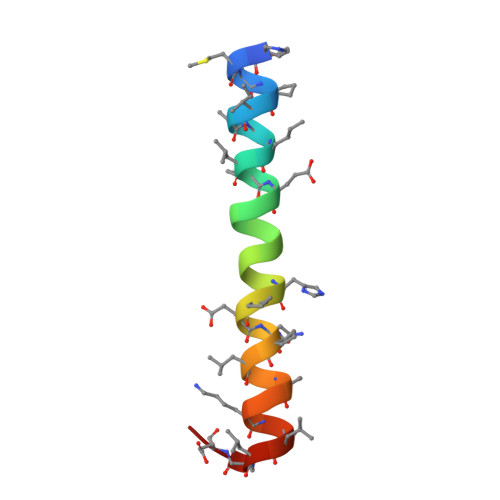Interplay among side chain sequence, backbone composition, and residue rigidification in polypeptide folding and assembly.
Horne, W.S., Price, J.L., Gellman, S.H.(2008) Proc Natl Acad Sci U S A 105: 9151-9156
- PubMed: 18587049
- DOI: https://doi.org/10.1073/pnas.0801135105
- Primary Citation of Related Structures:
3C3F, 3C3G, 3C3H - PubMed Abstract:
The extent to which polypeptide conformation depends on side-chain composition and sequence has been widely studied, but less is known about the importance of maintaining an alpha-amino acid backbone. Here, we examine a series of peptides with backbones that feature different repeating patterns of alpha- and beta-amino acid residues but an invariant side-chain sequence. In the pure alpha-backbone, this sequence corresponds to the previously studied peptide GCN4-pLI, which forms a very stable four-helix bundle quaternary structure. Physical characterization in solution and crystallographic structure determination show that a variety of alpha/beta-peptide backbones can adopt sequence-encoded quaternary structures similar to that of the alpha prototype. There is a loss in helix bundle stability upon beta-residue incorporation; however, stability of the quaternary structure is not a simple function of beta-residue content. We find that cyclically constrained beta-amino acid residues can stabilize the folds of alpha/beta-peptide GCN4-pLI analogues and restore quaternary structure formation to backbones that are predominantly unfolded in the absence of cyclic residues. Our results show a surprising degree of plasticity in terms of the backbone compositions that can manifest the structural information encoded in a sequence of amino acid side chains. These findings offer a framework for the design of nonnatural oligomers that mimic the structural and functional properties of proteins.
Organizational Affiliation:
Department of Chemistry, University of Wisconsin, Madison, WI 53706, USA.
















